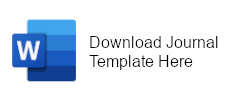Managing Drilling Risks in Ultra-Shallow Horizontal Well in Delta Steam Flood Field
Keywords:
drilling, ultra-shallow horizontal well, steam flood, extended reach drillingAbstract
Delta Field, a mature heavy oil Field, is one of the world's most extensive steam flood operations. The pay zones in “R” and “PK” formations range from 300 ft to 700 ft. The 172 horizontal wells, categorized as ultra-shallow horizontal and extended reach wells, had been drilled to ramp up oil production in the Delta Field since 2009. The primary drilling challenge in ultra-shallow horizontal wells is the high dogleg severity, up to 21°/100 ft, causing borehole geometry-related problems such as a tight hole, parted BHA, and casing tag. The complexity of the drilling challenges escalates with the characteristics of the formation in the Delta Field. The depleted unconsolidated sand formations caused the risk of severe lost circulation. Statistically, 46% of the drilling problems were total lost circulation cases and had caused several hole stability and stuck pipe cases. In addition, the matured steam injection to the pay zone formations adds the potential for a steam kick. As the drilling penetrates the steam pocket, the drilling mud is exposed to a temperature of up to 250°F. Steam kick ranks third in the highest occurrence of drilling problems in all drilling operations in the Delta Field. Therefore, it is crucial to develop improvements to manage these drilling risks for the next campaign.
A lessons learned-based study from previous drilling campaigns was conducted to improve drilling strategy to manage those significant drilling risks in ultra-shallow horizontal wells in the Delta Field. This paper elaborates on three main improvements developed and implemented in the 2022 horizontal drilling campaign: well design and drilling program, steam injector shut-in strategy, and drilling procedure in lost circulation conditions. After implementing these improvements in nine horizontal wells, the well geometry- related problems still occurred during the drilling landing section in two wells. However, the drilling could proceed to the target depth. The lost circulation still occurred, but the implementation of the blind drilling strategy allowed the drilling to reach the target depth without further problems. Furthermore, the steam injector shut-in strategy reduced the severity of lost circulation and eliminated well control events. In the end, the average non-productive time caused by well problems decreased by 23 hours per well in 2022.



